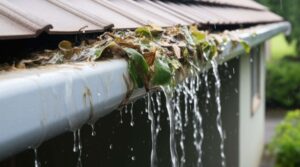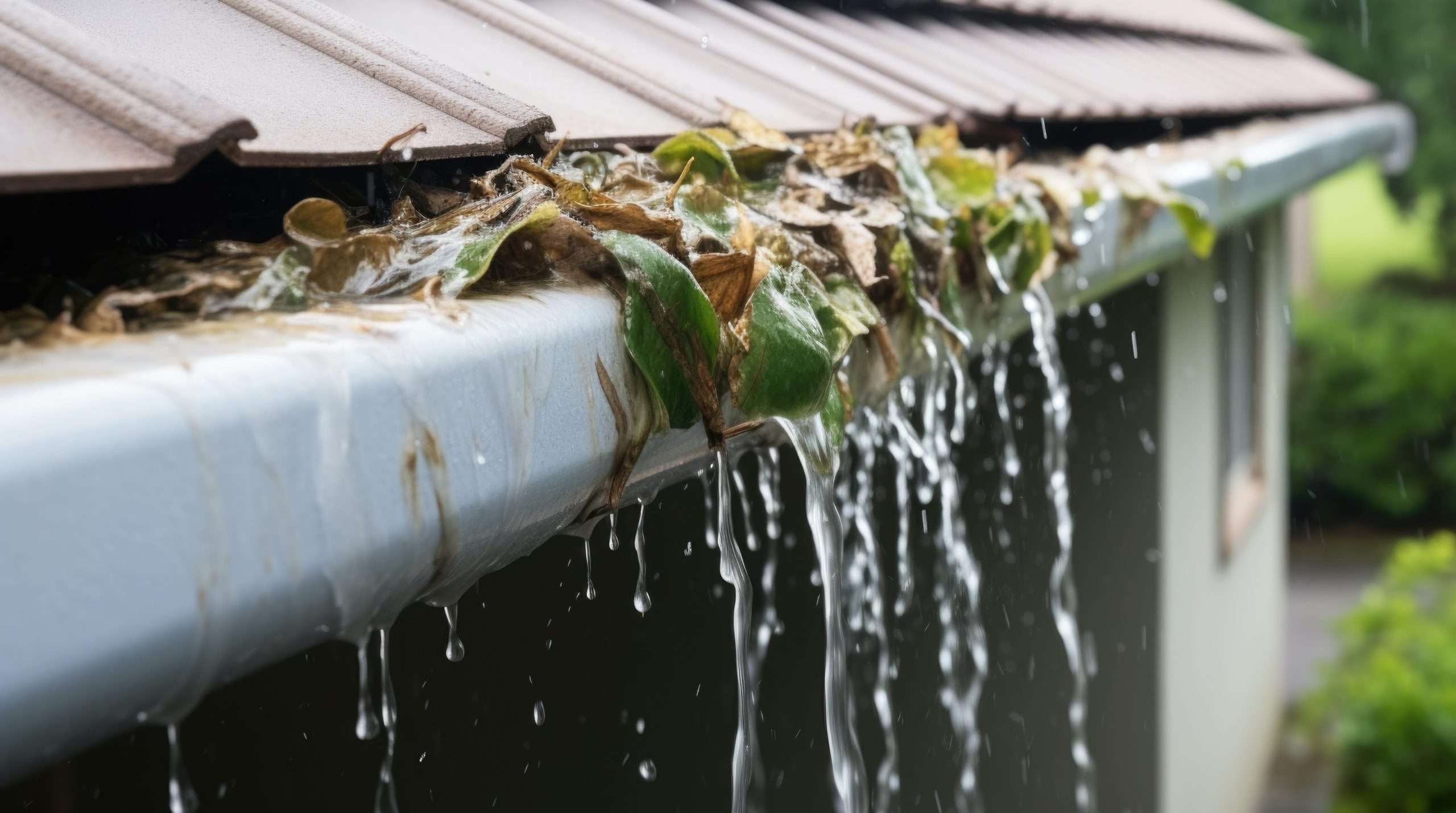When rainwater cascades over the sides of your gutters instead of flowing neatly through down pipes, it’s more than just an inconvenience. This overflow can lead to serious problems including foundation damage, landscape erosion, and even water entering your home. Understanding why your gutters are failing to do their job is the first step toward solving the problem.

Understanding the Purpose of Gutters
Before diving into the causes of overflowing gutters, it’s worth remembering their essential function. Gutters are designed to collect rainwater from your roof and channel it away from your home’s foundation through down pipes. When functioning properly, this system protects your home from water damage by directing water several feet away from the structure.
Common Causes of Overflowing Gutters
1. Clogged Gutters
The most frequent culprit behind overflowing gutters is debris accumulation. Leaves, twigs, seed pods, and granules from asphalt shingles can build up over time, creating blockages that prevent water from flowing properly.
Think of your gutter system like a bathtub drain—when hair clogs the drain, water backs up. Similarly, when leaves and debris clog your gutters, rainwater has nowhere to go but over the sides. This is especially problematic during heavy rainfall when large volumes of water need to move quickly through the system.
2. Improper Gutter Slope
Gutters need to be installed with a slight downward slope toward the down pipes to ensure water flows in the right direction. The standard recommendation is a quarter-inch of slope for every 10 feet of gutter. When gutters are installed without proper pitch—or when they become detached or bent—water can pool in sections and eventually overflow.
Over time, gutters can sag due to the weight of debris or water, improper installation, or simply age. When the slope is compromised, water movement slows or stops entirely, leading to overflow during rainfall.
3. Undersized Gutters
Not all gutter systems are created equal. The size of your gutters should be proportional to your roof’s square footage and the typical rainfall intensity in your region. Standard 5-inch K-style gutters work well for most homes, but larger roofs or areas with heavy rainfall may require 6-inch gutters or additional downspouts.
If your gutters are consistently overflowing during moderate rainfall, they may simply be too small to handle the volume of water coming off your roof. This is similar to trying to drain a swimming pool with a garden hose—the volume of water exceeds the capacity of the drainage system.
4. Down pipe Blockages
Sometimes the problem isn’t in the gutters themselves but in the down pipes. Debris can become lodged in these vertical pipes, creating backups that prevent water from exiting the system properly. When downspouts are clogged, water backs up in the gutters and spills over the sides.
5. Improper Down pipe Placement
Even if your gutters are properly sized and debris-free, poor down pipe placement can cause problems. Downspouts should be positioned to efficiently drain all sections of your gutter system. Without enough downspouts, water can accumulate faster than it can drain, particularly in gutter runs longer than 40 feet.
6. Damaged or Aging Gutters
Over time, gutters can develop cracks, holes, or separated seams that allow water to escape before reaching the downspouts. Even small defects can lead to significant leakage during heavy rainfall. Additionally, years of expansion and contraction from temperature changes can cause gutters to pull away from the fascia, creating gaps where water can spill.
Solutions for Overflowing Gutters
Regular Cleaning and Maintenance
The simplest solution to clogged gutters is regular cleaning. Most homes benefit from gutter cleaning at least twice a year—typically in late spring and late fall. However, if your property has many trees, more frequent cleaning may be necessary.
When cleaning gutters, remember to:
- Remove all debris from the gutters
- Flush the system with water to check for proper flow
- Inspect for damage while cleaning
- Check and clear down pipes
Correct the Pitch
If your gutters aren’t sloped properly, they may need to be reinstalled or adjusted. This is a job that might require professional assistance, as it involves detaching and rehanging sections of gutter to achieve the proper quarter-inch-per-10-feet pitch.
Upgrade Your Gutter System
If your gutters are consistently overwhelmed by rainwater, consider upgrading to a larger system. Moving from 5-inch to 6-inch gutters can increase water capacity by up to 40%. Additionally, installing more down pipes can improve drainage efficiency across the entire system.
Repair or Replace Damaged Sections
For older systems with multiple leaks or structural issues, partial or complete replacement might be the most cost-effective solution. Modern seamless gutters reduce the potential for leaks and can be custom-fitted to your home.
Add Downspout Extensions
Ensure your downspouts direct water at least 5-10 feet away from your foundation. Extensions can be added to existing downs pipes to carry water further from your home, preventing soil erosion and potential foundation problems.
When to Call a Professional
While many gutter issues can be addressed through DIY efforts, some situations warrant professional intervention:
- Heights that make DIY work dangerous
- Structural issues with the fascia or soffit
- Complex roof configurations
- Complete gutter system replacement
- Recurring problems despite DIY solutions
Professional gutter services can provide thorough cleaning, repairs, and system upgrades that might be beyond the average homeowner’s capability or comfort level.
Preventative Measures
The best approach to gutter problems is prevention. Consider implementing these practices:
- Schedule regular cleaning based on the trees surrounding your home
- Trim overhanging branches to reduce debris
- Install quality gutter guards appropriate for your situation
- Inspect gutters after major storms for damage
- Address small issues before they become major problems
Conclusion
Overflowing gutters are more than a mere annoyance—they’re a warning sign of potential water damage to your home. By understanding the common causes of gutter overflow and implementing the appropriate solutions, you can protect your property from water damage while extending the life of your gutter system.
Remember that a functioning gutter system is an essential component of your home’s defense against water intrusion. Taking the time to maintain this system properly is a small investment that prevents costly repairs down the road.
Whether you choose to tackle gutter maintenance yourself or hire professionals, regular attention to this often-overlooked part of your home will pay dividends in protecting your property for years to come.

Leave a Reply